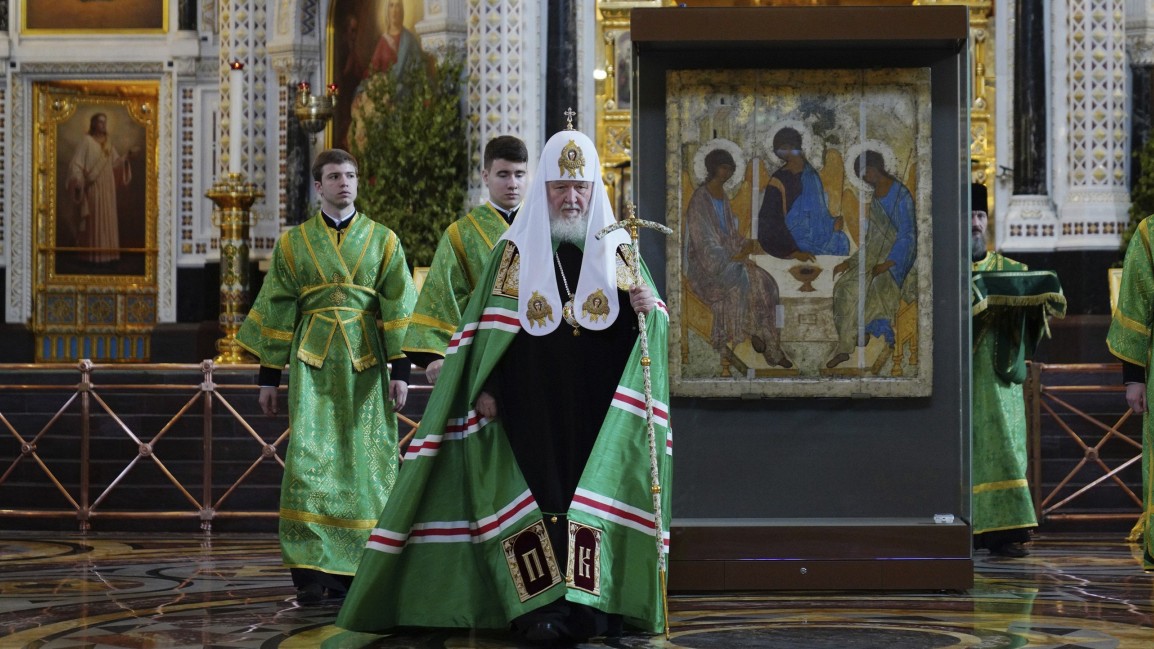The dispute between Russian Orthodoxy and the guardians of art has lasted more than ten years, no: more than 100 years, and according to the current interim status, the Church is ahead. Andrei Rublev’s icon of the Trinity, one of the most famous of orthodox Christianity, has been on display in Moscow’s Cathedral of Christ the Savior since Sunday, heavily guarded in a glass cube. The Russian Ministry of Culture promises that she will only stay there for two weeks. Russian Patriarch Kirill claims the painting will be on display in Moscow’s largest cathedral for at least a year, before moving to the Trinity Monastery in Sergiyev Posad, 70 kilometers from Moscow.
The opinion of international and Russian museum people on this process is unequivocal: the icon should not have left its place in Moscow’s Tretyakov Gallery for an hour, where it has been kept for more than a century.
In 2009, when the Orthodox Church had already wanted to bring the icon to Sergiyev Posad, museum experts wrote to the then President Dmitry Medvedev: “The ‘Trinity’ is currently in a condition that does not suggest any practical ‘use’,” it said in her letter. At that time the conservators were still able to fend off the church. A compromise between church and museum should defuse the situation. Every year at Pentecost – Russian: Trinity – the museum employees brought the icon through an underground passage to a church next to the Tretyakov Gallery, where similar climatic conditions prevailed. For three days, the faithful could pray in front of the icon, which nevertheless remained under the care of the museum.
The “Trinity” is considered by many to be one of the most beautiful of the Russian Middle Ages. The monk Andrei Rublev painted it at the beginning of the 15th century, in a time of Tatar raids, oppression and religious sects, which in turn found their way into film history through the film “Rubllev” by Soviet director Andrei Tarkovsky. “If Rublev’s ‘trinity’ exists, then there is a God,” the Russian philosopher Pavel Florensky once wrote. It was a kind of aesthetic proof of God. In truth, the relationship between church, art, and artist was more complicated, not only since the Bolsheviks brought church art into the museums.
Patriarch justifies war against Ukraine as ‘fight against evil’
According to the Orthodox view, icons are not paintings, but windows to heaven, revelations like the Bible. According to orthodoxy, their religious usefulness far exceeds their artistic value. The church has therefore long been demanding the return of all sacred works. The Russian attack played into their hands: Patriarch Cyril justifies war as a fight against evil, as a sacrifice in which death “washes away all the sins” of a soldier. For Russian Orthodoxy, Ukraine is even less an independent country than for the Kremlin. It was hoped that at some point this would show some appreciation for the spiritual side protection of aggression.
And so, last summer, Kyrill actually managed to get Rublev’s icon to leave the Tretyakov and be taken to Sergiyev Posad for the first time since 1917. When it returned to Moscow a few days later, the restorers registered 61 defects. Another transport could irreparably damage the picture.
But the museums have little to oppose the powerful orthodoxy. The most important houses are weakened by leadership changes. In the Tretyakov Gallery, Yelena Pronicheva, daughter of an FSB general, took the place of the internationally acclaimed art expert Selfira Tregulova. In Moscow’s Pushkin Museum, the internationally renowned Marina Loschak had to give way to the art historian Elisaveta Lichatschova. The latter recently warned of irreparable damage to the icon.
In mid-May, Russian President Vladimir Putin ordered the “Trinity” to be handed over to Orthodoxy – despite some resistance from within Orthodoxy as well. The chairman of an expert council on church art, Leonid Kalinin, had warned against damage – and had been fired by Cyril. It is more than unlikely that Rublev’s icon will soon return to Tretyakov. A museum director had warned that he didn’t know where this would end: “The church is insatiable.”
